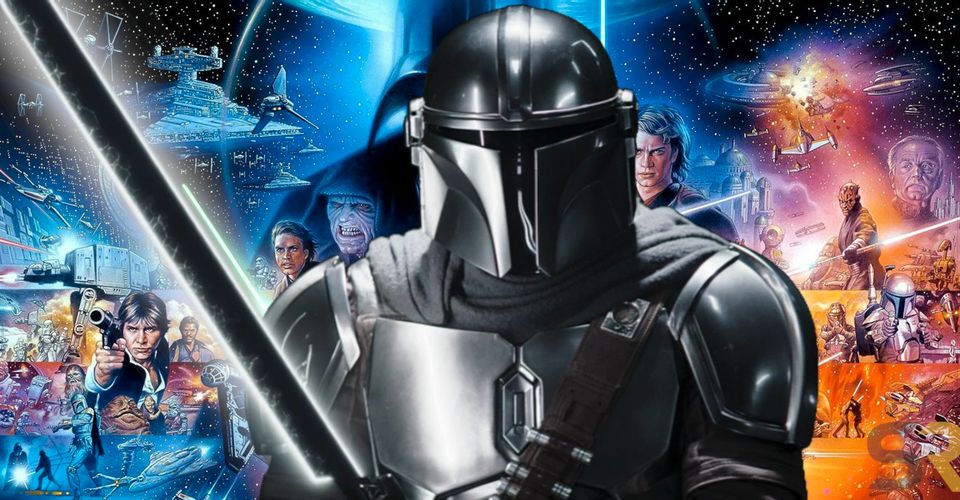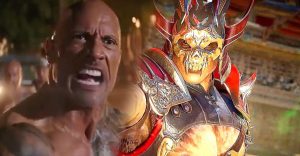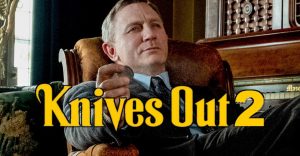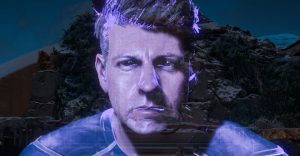Disney Star Wars’ Biggest Problem is a Focus on Canon Over Plot

Canon has always been a big deal for Star Wars, but Disney’s approach to storytelling has taken things too far and has begun to confuse canon connectivity with actual plot. While canon should be providing a framework for continuity between stories so individual story arcs can maximize their potential in the stories being told, these stories are often instead prioritizing the canon and servicing larger universe continuity instead of the other way around.
Star Wars was massively influential to cinema and escapist fantasy as a whole ever since audiences took their first step into a larger world along with Luke Skywalker, giving way to an epic saga including numerous spin-off stories examining the farthest reaches of a galaxy far, far away. Star Wars was unique among other epic stories of its type in the way it seemed nearly every character, location, and item had a story to tell, and often they did, with an expanded universe of stories, sourcebooks, merchandise, and more fleshing out every corner of the universe.
After Return of the Jedi, there was no plan for additional Star Wars movies, but Star Wars storytelling exploded with the original Expanded Universe. George Lucas’ sci-fi world grew in a way that no other franchise had before. While the original Expanded Universe stories aren’t a part of modern canon, Disney’s still continuing the same strategy of incorporating books, comics, videogames, and even theme parks into official canonical events.
What is The Function of Canon in Storytelling?

The concept of canon has evolved a bit since it became more of a focus in the modern shared universe era of blockbuster movies, but definitionally speaking, canon simply refers to a set of stories that are considered valid inclusions in a larger collection, such as the assembly of religious texts, like the Bible, where religious leaders established a set of standards to determine what texts would be included in the official canon, providing a gold standard by which all other religious texts and teaching could be evaluated for theological and doctrinal consistency. Debates over historical accuracy or truth of the texts themselves aside, canon, in this case, wasn’t the story itself, but the framework that determined which stories were included in the larger narrative.
When it comes to the modern shared universe storytelling, canon serves the same function, just not in such a serious religious context (for most people, at least). It denotes what stories are a part of the history of a fictional universe and therefore what elements from one story any other stories should attempt to adhere to for the sake of consistency, such as what characters are alive, what the state of society is, and etc. With such an abundance of storytelling in Star Wars, the canon has become vast and complex. Being a fictional world, that means canon can include anything from how a fictional technology works to the eye color of a particular character, where locations are relative to one another, and any other elements that make the world richer and provide a foundation from which other stories can grow.
While canon isn’t meant to be the story itself, it adds a lot of flavor to the story. It can help connect character arcs from one story to another or establish a technological, political, or social framework so the larger collection of stories can maintain a consistent narrative just as entertaining as the individual stories that make it up. There can be a lot of leeway in canonical storytelling, such as what the exact words were used by a certain character at a particular moment or exactly who shot first in a shadowy booth in the corner of a cantina, where 100 percent adherence to canon may not impact the larger story much, but inconsistencies such as ignoring the fact that a particular character was killed or what major battles were won or lost would begin to shatter the cohesion of the larger canonical narrative.
Disney is Far More Adherent to Star Wars Canon Than George Lucas Ever Was

George Lucas endorsed the creation of additional stories outside his Star Wars movies, but those stories were rarely treated as absolute canon. Lucas didn’t even always rigidly adhere to his own movies, changing things like Vader being Luke’s father or Leia being Luke’s sister after establishing it differently in a previous movie. These retcons are easy to handwave away, or even incorporate into the story, with Obi-Wan saying his story about Vader killing Anakin was “true… from a certain point of view.” When it came to the prequels, Lucas made even more changes, especially to expanded universe stories where he frequently contradicted stories written by other Star Wars writers about the Clone Wars, Mandalorians, or the Jedi. The books were always downstream from the movies so they would accept the movies as absolute canon, while Lucas generally did whatever he wanted with the movies.
Disney, however, has taken a much more rigid approach. In order to establish a clean slate, everything other than Lucas’ episodic Star Wars movies and Star Wars: The Clone Wars animated series was designated “Star Wars Legends” and they began a new expanded universe of storytelling in every medium possible, this time giving everything an even canonical playing field. No matter what obscure corner of the Star Wars universe was captured in a book, comic, video game, or basically any other fragment of storytelling, it was a canonical piece of a larger tapestry. Virtually every background character has at least some sort of short biography, if not a full-on spin-off story, and references to historical events often precede the eventual story detailing the full accounting of what happened.
Recent Star Wars Stories Have Become More Concerned With Canon Than Storytelling

While this approach to canon is often enjoyable seeing how all the puzzle pieces come together to form a larger picture, Disney’s Star Wars stories have begun to lose focus on the importance of the individual pieces themselves in favor of detailing how it all comes together. This mistake is most evident in chapter 5 of The Book of Boba Fett titled “Return of the Mandalorian”. The episode drew both praise high praise and criticism for a variety of reasons, but the fundamental problem with the episode is it’s not clear where it fits in Star Wars storytelling. The story is told in an episode of The Book of Boba Fett, but its plot barely services anything happening in The Book of Boba Fett, instead focusing on Mando, Din Djarin, furthering the plot and his character arc from The Mandalorian, establishing lore, and setting up MacGuffins for season 3 of The Mandalorian in ways that feel far more suited for the season premiere of The Mandalorian than chapter 5 of The Book of Boba Fett.
As a result, structurally speaking, it’s unclear exactly how this will come into play when the next season of The Mandalorian arrives and Din has a new ship, he’s been ex-communicated from The Children of the Watch, who declared he’s no longer a Mandalorian, he has a new beskar gift for Grogu, and more. There’s nothing wrong with filling in character background or detailing a side quest for the main character of one show as a side character on a spin-off show, but the events of this episode seem so essential to the canon The Mandalorian season 3 that it breaks any understanding of what separates one show from another. Season 3 will now inherently be missing a major moment from Din Djarin’s character arc, and his motivations will be largely driven by events that happened outside the bounds of his own show.
While the story of his character is still interesting and the canonical connection means audiences can still enjoy the larger character arc in Star Wars canon, it blurs the boundaries between any given Star Wars book, show, or movie and reduces their stories to the equivalent of a Wookiepedia page, merely serving to ensure characters are in the right place at the right time to service a story other than the one at hand. It’s the storytelling equivalent to the MCU replacing all its movies full-length post-credits scenes, where everything exists merely to connect to every other thing and nothing telling its own story.
Oddly, Rogue One: A Star Wars Story, which should be the epitome of this problem, is actually the exception to the rule. The entire existence of Rogue One exists to explain the backstory behind a single sentence of the opening crawl to Star Wars: Episode 4 – A New Hope. The cynical expectations would be for Rogue One to simply connect dots between stories that already exist without adding anything of major significance for fear of disrupting established stories. Instead, Rogue One established new characters, showed a new side of the Star Wars galaxy, provided compelling stakes, and dovetailed perfectly into the opening scene of A New Hope in a way that improves both movies. It succeeded not simply because of what it added to the larger canon, but because of what it added to the larger canon while still functioning as a thrilling Star Wars story on its own terms.
Maintaining a larger shared universe canon expands the realm of the type of long-form storytelling that can exist in a universe like Star Wars, but that storytelling needs to remain rooted in the story for it to pay off. If canon comes first, it reduces the individual stories, and thus, the collective storytelling, to the equivalent of a cinematic checklist where stories are simply vehicles for setting up other stories which themselves are servicing other stories, with the payoff only coming from the zoomed-out view of events as they would be depicted in a Ken Burns documentary.
About The Author


















